Sometimes we want a little drama in the garden — something unusual, a plant with the power to stand on its own. Few four-season plants can compare with coral bark Japanese maple. With fiery red stems that stand out in the winter landscape, this variety is definitely an attention grabber at this time of year; it offers much during the growing season as well, with artful foliage and a beautiful form.
With landscapes stripped down to the bare essentials in winter, it’s a lucky homeowner who has these branches in view.
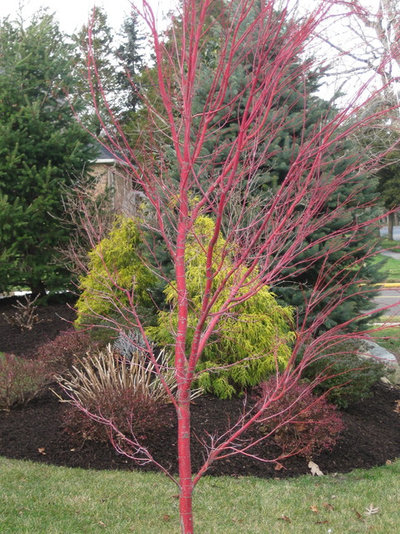
Barlow Flower Farm
Botanical name: Acer palmatum ‘Sango-kaku’
Common name: Coral bark Japanese maple
Origin: Native to Asia
Where it will grow: Hardy to -20 degrees Fahrenheit (USDA zones 5 to 8; find your zone)
Water requirement: Medium
Light requirement: Sun to partial shade
Mature size: 15 to 20 feet tall, with an equal spread
Benefits and tolerances: Slow growing; small-scale trees are insect and disease resistant
Seasonal interest: Outstanding winter color, attractive light green foliage in spring and summer
When to plant: Spring to fall
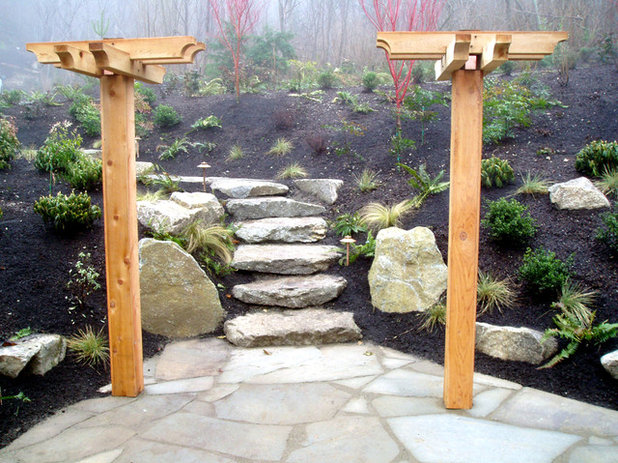
Studio 342 Landscape Architecture
Distinguishing traits. This cultivar has unusual red bark (especially on young stems), making it an exceptional specimen tree for the winter landscape
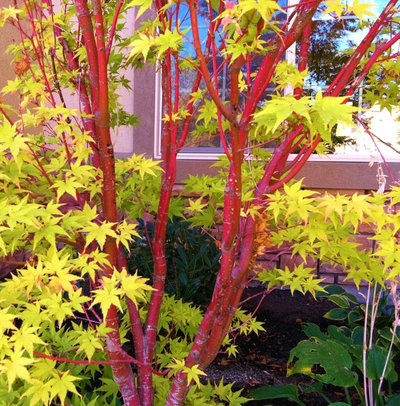
Chuck B. Edwards - Breckon Land Design
How to use it. Site plants where they can be seen easily from indoors and enjoyed along with evergreens during the winter months; when positioned near a wall or a backdrop of cedars, the branches will be even more obvious. Young stems offer the most intense color and can be cut for winter containers or simply put in a glass vase.
These are small trees, growing to 20 feet tall, so they work well in small spaces — if the space is very confined, they can also be planted in large containers and accented with
Japanese forest grass (
Hakonechloa macra)
and
purple coral bells (
Heuchera sp) for contrast.
The palmate leaves are absolutely lovely and very delicate. During the summer the leaves are a yellow-green that looks fresh even in intense heat.
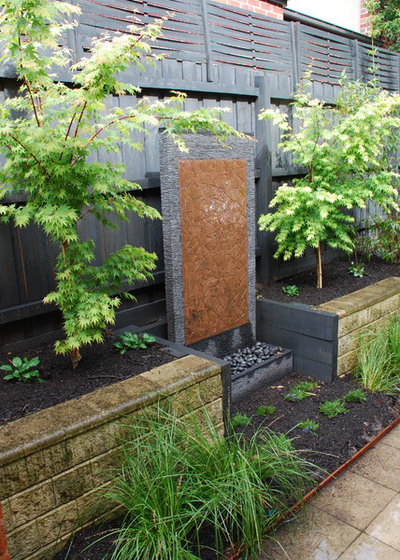 Planting notes.
Planting notes. Gardeners in cold climates will want to think about placement, as the trees are hardy to USDA zone 5 and above. Grow them against a fence to protect them from wind or near a house on a south-facing wall if your winters are long and cold.
Provide well-drained soil and lots of water as the new trees are becoming established, especially in warmer zones.
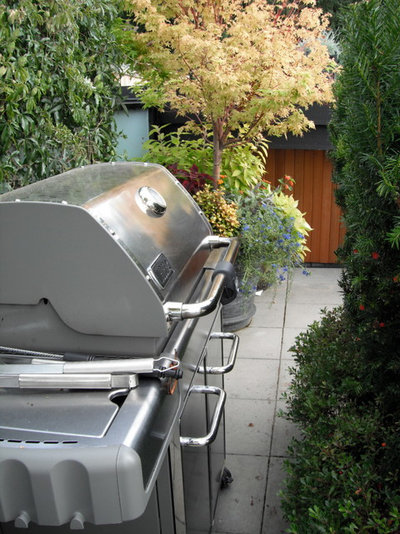
Glenna Partridge Garden Design
There are many outstanding Japanese maples available, but coral bark Japanese maple is a standout that can take your garden to another level.





